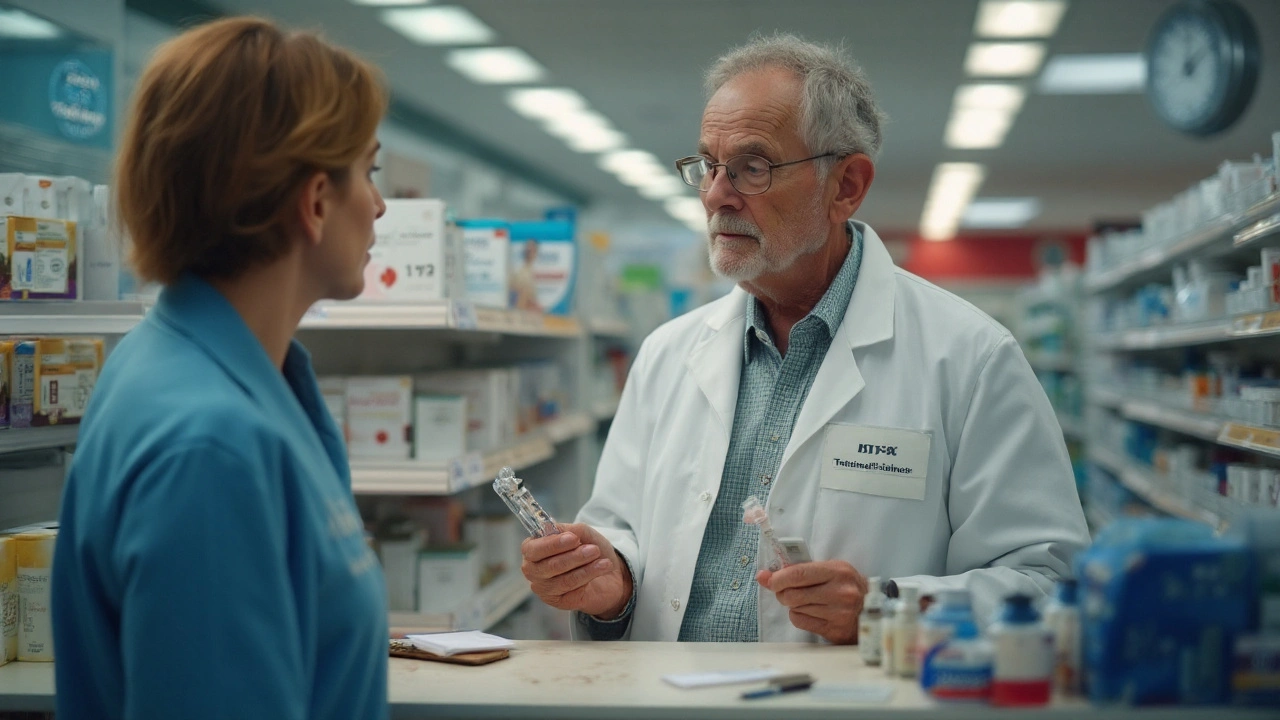
TL;DR
Triamcinolone is a synthetic corticosteroid that reduces inflammation in skin, joints, and airway tissues. It works by binding to glucocorticoid receptors, switching off inflammatory genes and boosting anti‑inflammatory proteins. Because it comes in several formulations-cream, injection, nasal spray-its speed of action varies widely.
When Corticosteroid molecules enter a cell, they cross the cell membrane and attach to intracellular glucocorticoid receptors. The complex then moves to the nucleus and either promotes the transcription of anti‑inflammatory proteins (like annexin‑1) or suppresses pro‑inflammatory genes (such as IL‑1, TNF‑α). This genomic effect typically begins within an hour but visible clinical improvement takes longer because the body needs time to clear mediators and rebuild tissue.
Triamcinolone is available in three main delivery forms, each with a distinct pharmacokinetic profile.
| Form | Typical Dose | Onset of Relief | Peak Effect | Duration |
|---|---|---|---|---|
| Cream (0.1%‑0.5%) | Apply thin layer 1‑2×/day | 2‑5 days | 1‑2 weeks | 2‑4 weeks |
| Intra‑articular injection (40mg) | Single‑shot into joint | 24‑48hrs | 5‑7 days | 4‑6 weeks |
| Nasal spray (60µg/actuation) | 2 sprays each nostril daily | 1‑3 days | 5‑10 days | 2‑4 weeks |
Even with the same product, patients notice different timelines. Here’s why:

Doctors often choose a steroid based on potency and speed of action. Below is a quick side‑by‑side look.
| Drug | Relative Potency | Typical Use | Onset of Action (systemic) |
|---|---|---|---|
| Triamcinolone | 5‑10× hydrocortisone | Topical, intra‑articular, nasal | 4‑6hrs (oral), 24‑48hrs (injection) |
| Prednisone | ≈4× hydrocortisone | Oral systemic inflammation | 6‑8hrs |
| Dexamethasone | ≈25× hydrocortisone | Severe asthma, cerebral edema | 2‑4hrs |
Notice that Triamcinolone onset time sits between prednisone and dexamethasone for systemic routes, but its topical form can feel faster because it acts right where the problem lives.
Even though the drug is designed to calm inflammation, it can cause unwanted reactions that may be mistaken for delayed efficacy.
If any of these symptoms appear, contact a healthcare provider; they often signal that the formulation or dose needs tweaking rather than that the drug is failing.
Understanding Triamcinolone’s timeline opens the door to broader topics:
After reading this timeline, you may want to explore "How to taper off corticosteroids safely" or "When to switch from steroid creams to calcineurin inhibitors." Those articles dive deeper into management strategies once the initial inflammation is under control.

Most patients notice a reduction in itching and redness within 48‑72hours, but visible clearing of plaques typically takes 2‑5days. Full effectiveness is usually reached after 1‑2weeks of consistent use.
Pain often starts to ease within 24‑48hours. The strongest analgesic effect appears around day 5‑7, after the steroid has fully settled into the synovial fluid.
Triamcinolone nasal spray usually begins to reduce sneezing and runny nose after 1‑3days. If symptoms persist beyond a week, you may need a higher dose or a different class of antihistamine.
Applying high‑potency cream over more than 10% of body surface for longer than two weeks raises the risk of skin atrophy and HPA suppression. Doctors often rotate to a lower‑potency steroid after that period.
First, verify you’re using the product exactly as prescribed (dose, frequency, application technique). If the timeline has passed without change, contact your clinician - they may adjust the dose, switch steroids, or add a non‑steroidal therapy.
Write a comment